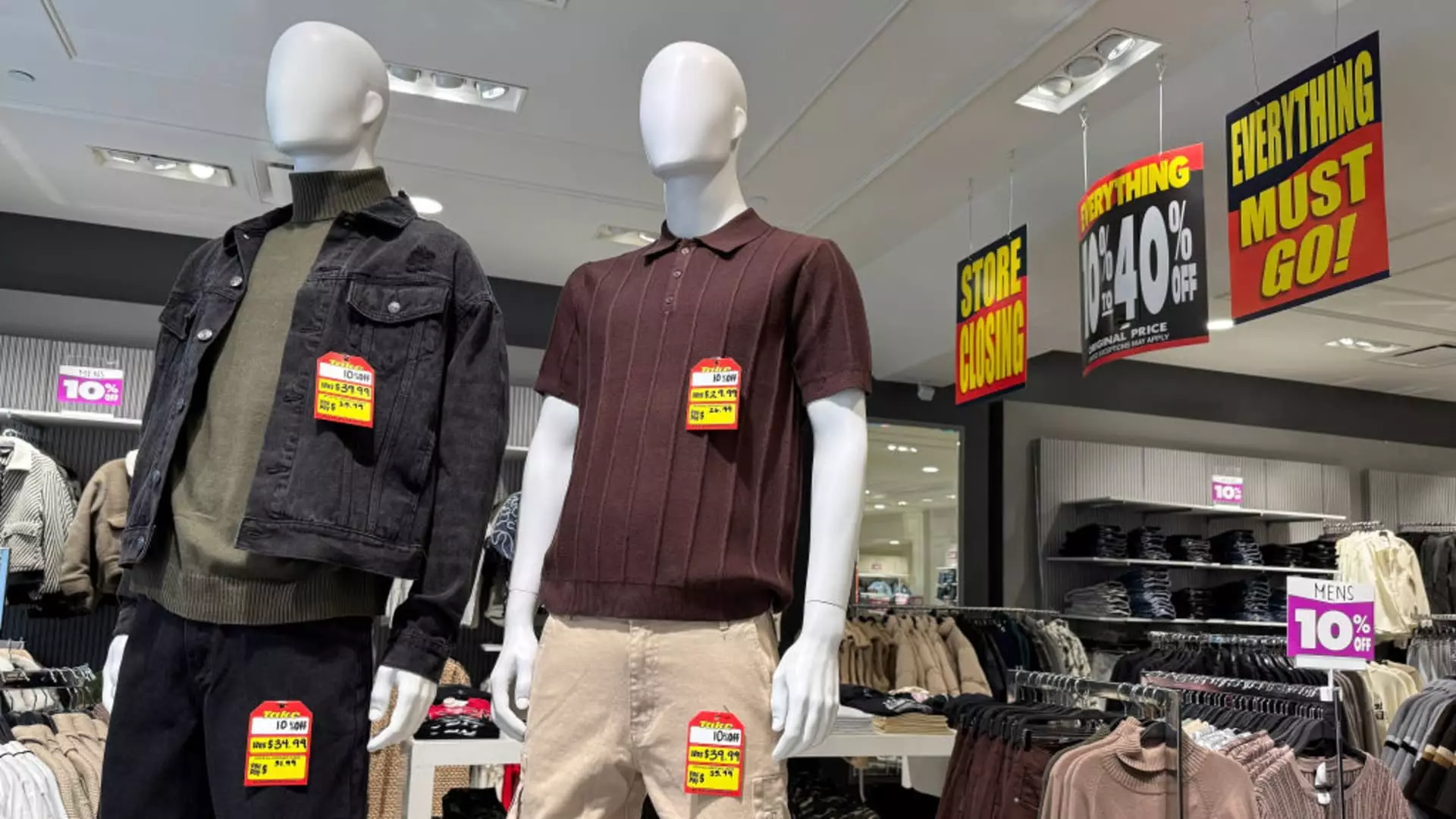The iconic fast-fashion brand Forever 21 has filed for bankruptcy protection for the second time in just six years, a startling testament to the volatile nature of the retail industry and the shifting landscape of consumer preferences. While Forever 21 once stood as a beacon of youthful style and affordable clothing, its downfall reflects a broader tragedy in American retail—one marked by intense competition and a regulatory environment that favors international online competitors like Shein and Temu. The once bustling stores are now dimming, with over 350 locations gearing up for liquidation sales, illuminating a stark reality: even giants can topple swiftly.
The company’s demise can be attributed to multiple factors, but the glaring issue at hand is the significant impact of the de minimis exemption. Established to facilitate commerce, this loophole permits foreign retailers to ship goods valued under $800 into the U.S. duty-free, allowing brands like Shein and Temu to drive prices down while traditional retailers, including Forever 21, rot under the weight of tariffs and duties. Stephen Coulombe, the co-chief restructuring officer, aptly pointed out the detrimental effects of this exemption, emphasizing that it creates an uneven playing field that marginalizes American businesses. The U.S. trade landscape is not merely competitive; it’s rigged in favor of foreign retailers, undermining homegrown brands attempting to make a comeback.
Misguided Partnerships and Missed Opportunities
Interestingly, Forever 21’s owner, Sparc Group, recently attempted a misguided partnership with Shein in hopes of leveraging its competitor’s success. This move, rather than revitalizing Forever 21, appears to have suffocated its distinctiveness, eroding the very brand identity that had initially captured the hearts of millions. Instead of effectively countering Shein’s aggressive pricing, this partnership muddled Forever 21’s brand ethos and left it scrambling to carve out a niche in an increasingly saturated market.
Despite the brand’s efforts to reinvent itself—such as reaching out to over 200 potential buyers and courting interest from strong operators who may be willing to revive it—the fact remains that navigating the stormy waters of fast fashion isn’t just about brand management; it’s about adapting to an ever-evolving consumer landscape. The reality is harsh: a once-thriving gig in the marketplace is now a cautionary tale of stagnant growth and mounting losses amounting to over $400 million in just the past three years.
Growth Stunted by External Pressures
In its heyday, Forever 21 once boasted an impressive revenue of $2 billion and an enviable $165 million in EBITDA for the fiscal year 2021. However, external challenges, from supply chain disruptions to inflationary pressures, have drowned this once-promising brand. Notably, the pandemic’s lingering effects have exacerbated these issues, driving home the notion that retail is as much a psychological battleground as it is a transactional one.
One might wonder how a brand with such potential rapidly fell from grace. Despite a significant period of financial respite post-first bankruptcy—characterized by strategic investments and a streamlined store fleet—Forever 21 failed to agilely adapt to a transformed consumer base that now prioritizes speed, variety, and price. With investment management firms, like Authentic Brands Group, labeling their 2020 acquisition of Forever 21 as “probably the biggest mistake,” it becomes clear that even investors with sophisticated knowledge of market dynamics overlooked the growing storm brewing in fast fashion.
The Broader Implications for American Retail
This narrative is not merely about Forever 21 but symbolizes a more profound concern for American retail as a whole. It raises critical questions regarding consumer loyalty, regulatory frameworks, and the sustainability of fast fashion amid a climate crisis. The fervor surrounding brands like Shein and Temu relies not only on their depletion of prices but on an unchecked cycle of consumption that leaves older players, traditionally rooted in quality and craftsmanship, struggling to remain relevant.
As Forever 21’s story unfolds, it serves as a clarion call for American businesses to evaluate their positioning in a digital-first economy, where adaptability and rapid response are prerequisites for survival. The speed and cost implications of modern fashion retail have made it all too apparent that without real-time adaptability, American brands risk becoming relics in a world racing toward the future—where speed, not loyalty, dictates market success.
Forever 21 may still have some flicker of hope for its international ventures, but within U.S. borders, it feels like a rendezvous with fate, leading a storied legacy to an ignominious end. What does the future hold for this once-beloved brand? One can only hope that it learns from its tumultuous journey and revamps rather than relinquishes its identity in a world so heavily influenced by fleeting trends and ruthless pricing strategies.

